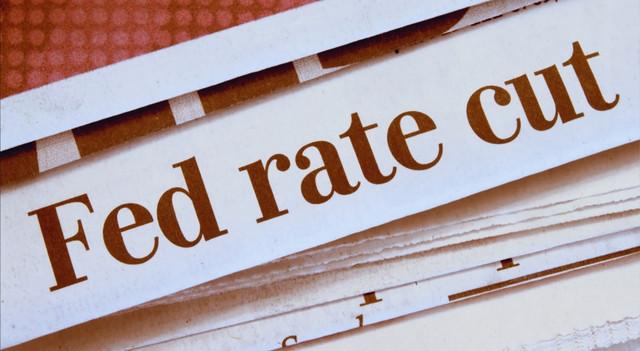U.S. index futures showed modest fluctuations in premarket trading this Wednesday as Wall Street gears up for a highly anticipated rate cut by the Federal Reserve. CME Group’s FedWatch tool shows traders pricing in a 63% chance of a 50-basis-point cut and 37% odds of a 25-basis-point move.
At 5:36 AM ET, Dow Jones futures (DOWI:DJI) rose 56 points, or 0.14%, S&P 500 futures gained 0.11%, and Nasdaq-100 futures advanced 0.11%. The 10-year Treasury yield stood at 3.668%.
Today’s U.S. economic calendar includes August housing starts and building permits, both released at 8:30 AM ET. Housing starts are expected to reach 1.31 million units, up from 1.24 million previously, while building permits are forecast to total 1.41 million. At 2:00 PM ET, the Federal Reserve will announce its interest rate decision, followed by a press conference with Chair Jerome Powell at 2:30 PM ET, a key moment to shape economic expectations.
In commodities, oil prices fell after two days of gains, weighed down by weak macroeconomic data that raised demand concerns. Violence in the Middle East provided some price support, but expectations of Fed rate cuts dominated the market.
Additionally, the Biden administration plans to purchase up to 6 million barrels of oil for the Strategic Petroleum Reserve, the largest purchase since the historic 2022 sale. The announcement is set for Wednesday, targeting oil delivery in 2025, capitalizing on prices below the $79.99 per barrel target.
West Texas Intermediate crude for October dropped 1.67% to $70.00 per barrel, while Brent for November fell 1.52% to $72.58 per barrel.
Asia-Pacific markets mostly closed higher. Australia’s S&P/ASX 200 inched up to 8,142.1. Japan’s Nikkei 225 rose 0.49%, closing at 36,380.17, while the Topix gained 0.38% to 2,565.37. In contrast, Taiwan’s Weighted Index fell 0.78% to 21,850.08. South Korean and Hong Kong markets were closed for a holiday.
China’s CSI 300 gained 0.37%, closing at 3,171. While the energy sector performed well, consumer and tourism stocks declined, impacted by weak earnings and natural disasters.
In Japan, exports grew just 5.6% in August, below the 10% forecast. Shipments to the U.S. fell 0.7%, marking the first decline in nearly three years. Auto sales plunged 14.2%. Machinery orders dropped 0.1% in July, frustrating the expected 0.5% increase. August imports rose 2.3% year-over-year, against a Reuters forecast of 13.4% growth. The trade balance posted a deficit of ¥695.3 billion.
According to Reuters, Japan’s ruling party leadership race, which will determine the next prime minister, could complicate the Bank of Japan’s plan to normalize its monetary policy. Candidates, including Shigeru Ishiba and Shinjiro Koizumi, support gradual rate hikes, while Sanae Takaichi opposes them, advocating for low borrowing costs. Takaichi’s victory could delay rate hikes and weaken the yen, complicating the economic recovery. The winner is likely to call early elections, further impacting the BOJ’s policy outlook.
In China, the real estate crisis has led to falling home prices, once confined to cities like Hegang, spreading to wealthier regions. Southern cities like Huizhou and Qingyuan experienced sharp price drops. In August, average prices fell for the 14th consecutive month in major cities, reflecting the deepening housing crisis, despite government efforts to boost the sector.
China’s central bank, the PBOC, will inject liquidity into lenders on September 25, while reviewing its monetary policy tools. It will also renew medium-term lending facility funds and downplayed the role of the MLF rate, using reverse repurchase agreements as the main tool. The slowing economy and deflationary pressures are prompting a greater focus on monetary easing.
The Bank of Indonesia’s Board of Governors prepares to wrap up a two-day meeting, deciding on its policy rate today, which is currently at its highest level since 2016, despite inflation being within the 1.5%-3.5% target range.
European markets are trading lower, with technology and healthcare sectors leading the declines. Investors await August inflation data for the Eurozone and the U.S. Federal Reserve’s monetary policy decision while digesting the U.K.’s inflation data, released earlier today.
U.K. inflation remained steady in August, with a rise in the services sector, boosting expectations that the Bank of England will leave interest rates unchanged. Consumer inflation stood at 2.2%, below the forecast of 2.4%. Services inflation rose to 5.6%, driven by airfares.
U.S. stocks closed mostly flat on Tuesday. The Dow Jones fell 0.04% to 41,606.18 points. The S&P 500 edged up 0.03% to 5,634.58 points, while the Nasdaq gained 0.20%, closing at 17,628.06 points. The unexpected 0.1% increase in retail sales in August reduced expectations for a 50-basis-point cut by the Federal Reserve.
On the quarterly earnings front, General Mills (NYSE:GIS) reports before the market opens; Steelcase (NYSE:SCS) and Sangaoma Technologies (NASDAQ:SANG) after the close.
